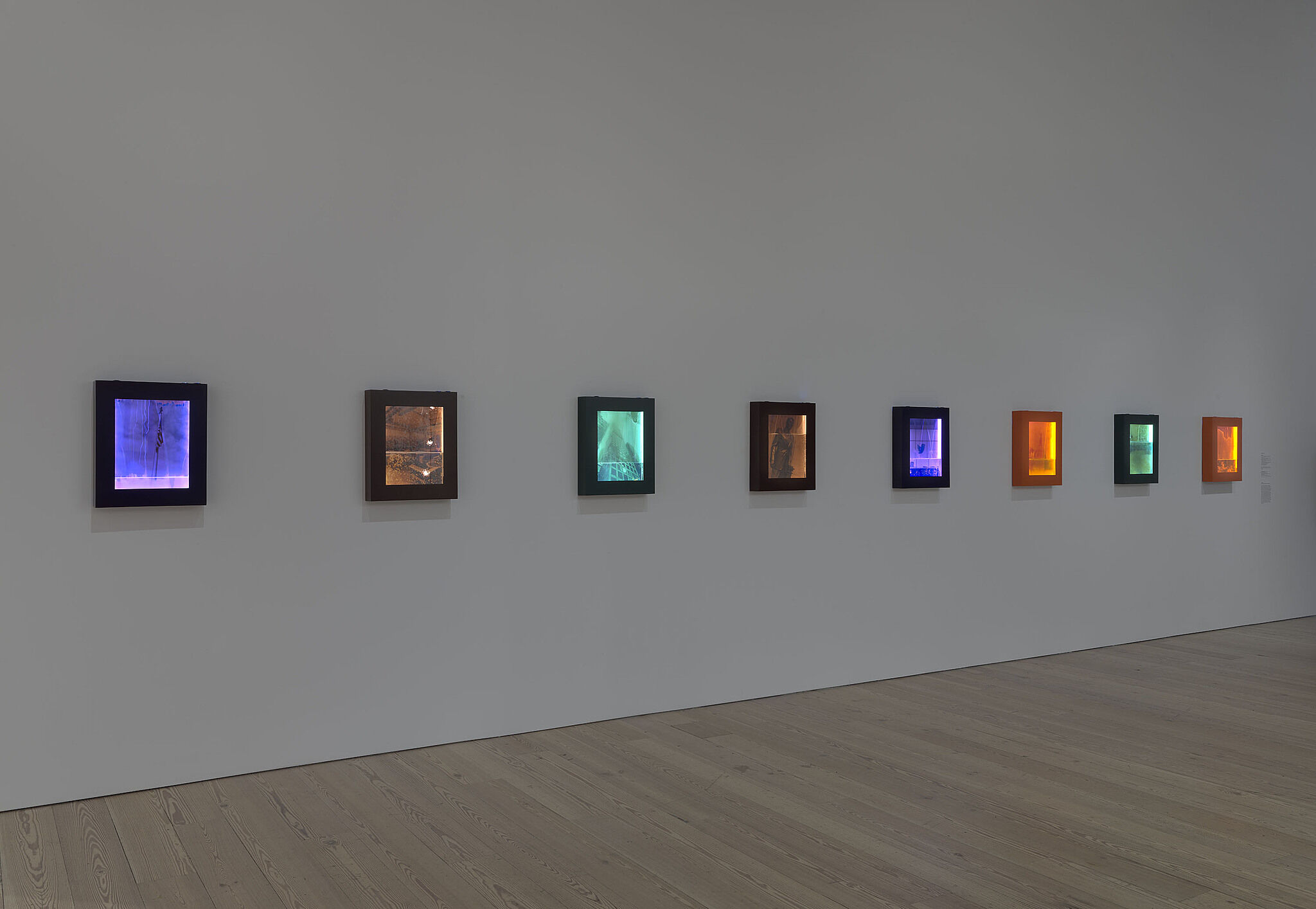Whitney Biennial 2019 | Art & Artists
May 17–Oct 27, 2019
Whitney Biennial 2019 | Art & Artists
Josh Kline
39
Floor 5
Born 1979 in Philadelphia, PA
Lives in Brooklyn, NY
Josh Kline explores the conditions of technology, politics, and labor, employing new tools and materials to transform and comment on cultural touchstones. Kline began a science-fiction cycle of works in 2014 to imagine both the possibility and the ruin embedded in our contemporary moment. In earlier projects Kline imagined what might happen if extreme political factionalism, economic inequality, and mass automation continue unabated. Kline directs his focus toward catastrophic climate change and its systemic causes. Photographs of sites of American power are presented behind tinted glass in LED-lit frames, with the hues of pharmaceutical bottles. Kline’s photographs—originally shot on a smartphone—are continuously inundated by water, which the artist describes as “washing the images away like bad dreams or traumatic memories.” In spite of his work’s dystopian implications, Kline insists that “the future hasn’t happened yet. It can be shaped in the present.”

